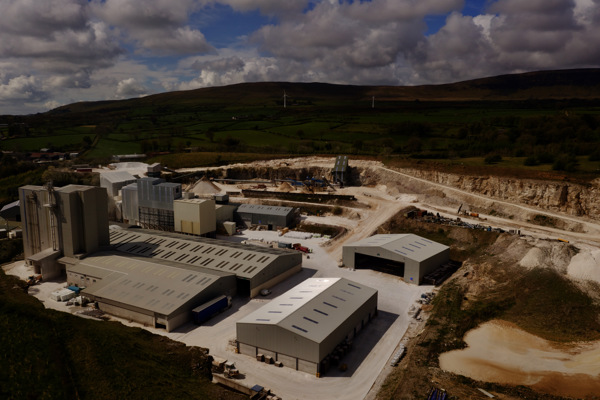Commercial calcium carbonate grades, in the form of granules, powders and slurries, are produced in two ways; through the extraction and processing of natural ores to create Ground Calcium Carbonate (GCC) or synthetically through chemical precipitation to create Precipitated Calcium Carbonate (PCC).

GCC
After quarrying from the extensive reserves of chalk, limestone and dolomite found in the UK, treatment is required to process the calcium carbonate for further use (only a few reserves have the sufficient quality required to provide the raw materials needed for agricultural and industrial use).
Typically, this includes washing, sorting of undesirable contaminants, grinding, size classification of particles and drying. Surface treatment of GCC can also be undertaken to add value such as the addition of coatings for to match the surface tension of the products they are commonly mixed with such as thermoplastics.
At the outlet of the process, the material is delivered in bags or in bulk when dry, or in tankers when in slurry form (suspended in water).
PCC
PCC is either produced through a recarbonisation process or as a by-product of some bulk chemical processes. Most commercial processors use the recarbonisation to achieve a variety of calcium carbonate products. Firstly, limestone is converted into calcium oxide (lime) and carbon dioxide via calcination at high temperature. Following this, the lime is slaked with water and the resulting milk of lime is purified and recarbonsied with the carbon dioxide produced from the first stage.
A cake with up to 60% of the solid matter from the resulting water suspension is then obtained via filtration and is then dried and ground. Depending on the chemical composition of the milk of lime used and on the purifying stages during production, food and pharmaceutical grades as well as technical grades can be produced.
The fineness and morphology of the PCC crystals can be modified by controlling temperature, concentration, and time of this process to achieve different morphologies such as Calcite, Aragonite and Vaterite which have different applications.
